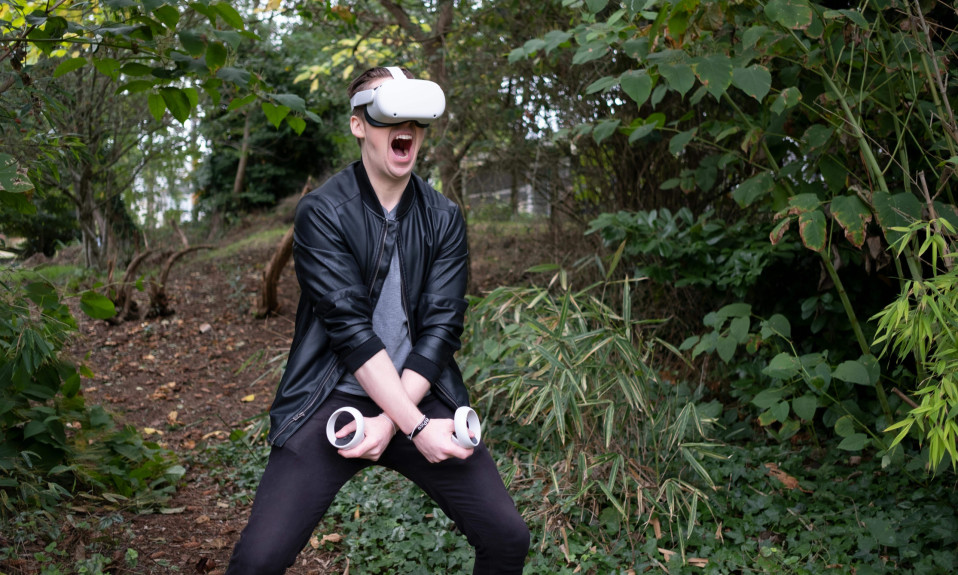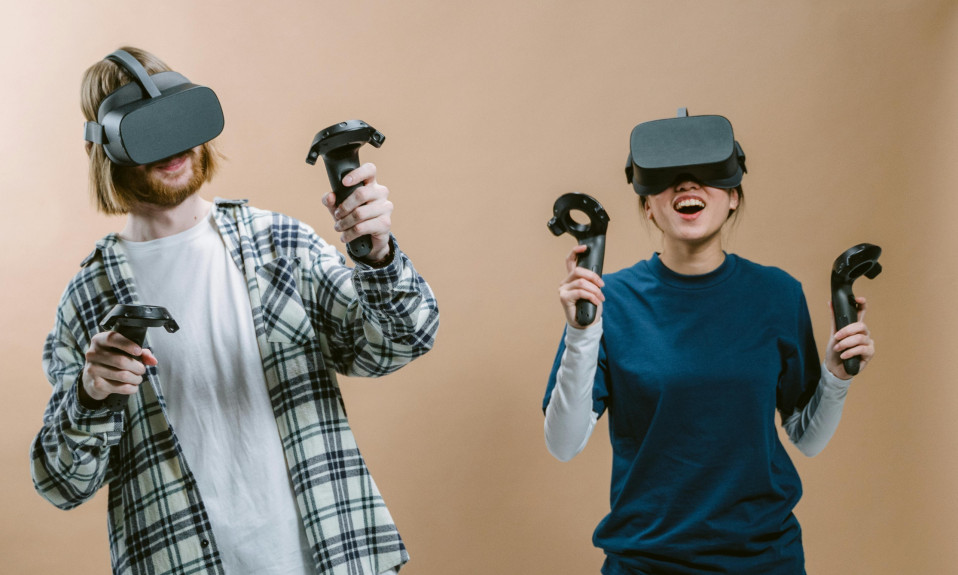The vast majority of innovations in the tech space raised many concerns and conflicting views during their infancy.
As virtual reality and the technology it relies on gradually goes mainstream, large corporations are investing heavily to integrate VR functionalities within their products and services.
Although early integrations of VR; were used for simulations in the military and gaming industry, today’s virtual reality footprints are in the healthcare, teaching, e-commerce, and agricultural sectors.
Is VR a waste of money? Some people believe it is, while others see VR as a growing industry with value.
Since research and development toward virtual reality and related VR gadgets are still in their infancy, it may be too early to write off virtual reality as a waste of money.
Most individuals who believe virtual reality is a waste of money refer to the expensive nature of select VR headsets, omnidirectional treadmills, controllers, VR-compatible computer pcs, and other associated gadgets.
The other category of individuals is more concerned with the health implications and varying degrees of discomfort that come with prolonged use of VR headsets.
But before concluding if VR is a waste of money or not, let us take a step back and see how similar technologies have progressed over the years.
I do not want a discount, said no one ever! Upgrade your VR setup today with top-tier accessories—use code META20 for 20% off + free shipping on orders over $15. Level up your VR experience now ➡️ Shop & Save!
Quick Navigation
Early Generation vs. Modern Day Computers (Cost Comparison)
A lot has changed in the world of computers since the first digital machine and programmable computer, “ENIAC,” was developed in 1945.
The history of the modern-day computer dates back to 1822 when Charles Babbage (The Father of Computers) developed the “difference engine,” which marks roughly 200 years since its conceptualization.
Early versions of computers were so big that they filled rooms and cost a fortune to develop.
When the ENIAC was completed in 1946, building it cost an estimated $487,000, and adjusted for inflation would be $7,299,905 today.
However, data from Statista reveals that as of 2019, the average selling price for a personal computer was within $632-$733 in the United States.
Not only have personal computers reduced in size over the years, but they have also grown to become faster, more efficient, and user-friendly for a tiny fraction of the cost of early models of computers.
What are the Cost Implications for Virtual Reality (VR) Headsets?
The first model of virtual reality headsets was in 1968, and despite being around for 54 years, research and development geared towards building VR are in the early stages.
Consumer grades of virtual reality headsets only came into the limelight in the 2000s and have seen several iterations.
Like most tech products, the costlier models of VR headsets usually have better features like improved user experience, better graphic resolutions, and more.
According to Statista, the average price of virtual reality headsets in 2019 was around $299-$499, with popular brands like the Oculus (Meta Quest) headsets and the HTC models having a larger market share.
With research and development into VR gaining traction, the prices of virtual reality headsets and VR compatible pc would get influenced, making affordable options readily available in marketplaces.
I do not want a discount, said no one ever! Upgrade your VR setup today with top-tier accessories—use code META20 for 20% off + free shipping on orders over $15. Level up your VR experience now ➡️ Shop & Save!
Health Implications Due to Prolonged Use of Virtual Reality Headsets
Strapping on virtual reality headsets to one’s head for extended periods may cause varying degrees of discomfort.
According to Steve Baker, a software engineer working with consumer and military-grade VR goggles, “Not everyone gets VR sick, but for those that do, it’s a horrible experience.”
Most experiences on the VR headset require users to twist and turn their heads frequently to immerse themselves in virtual reality.
When this goes on for hours, it may cause strain to the neck and slight pain, and sometimes users end up nauseous.
Steve Baker attributes the nauseating feeling and uneasiness caused by prolonged use of VR headsets to “depth of focus,” which is an underlying problem with visual quality in virtual reality.
According to him, the problem with depth of focus is mild in the military-grade VR headsets compared to the cost-friendly consumer-grade versions.
However, experiments using “light-field technology” may help solve this problem, but temporarily, the idea remains speculative.
How Have Virtual Reality (VR) Headsets Improved Over the Years?
Positive improvements in the tech VR relies on have influenced the user experience, design interface, especially the prices of virtual reality headsets.
What people saw as an irrelevant expense or waste of money is now an affordable and thrilling gateway into the world of virtual reality.
Unlike early models of virtual reality headsets, newer and improved versions offer a broad range of content, applications, and experiences that users can explore in virtual reality.
Newer models of the Oculus (Meta Quest) and HTC Vive headsets developed as standalone consoles support wireless functionalities eliminating the need for dedicated gaming or VR compatible pcs.
Although these wireless headsets have limited battery life and offer a slightly lower graphic resolution, they allow more flexibility (physical space to move around) compared to VR headsets that require wired connections.
Vr headsets have also improved to track movements effortlessly with the use of HD cameras, sensors, and inbuilt software mounted at different angles to capture head and hand movements.
The VR landscape is ever-changing, with several improvements happening in recent years. But as time passes, more changes are likely to unpack.
I do not want a discount, said no one ever! Upgrade your VR setup today with top-tier accessories—use code META20 for 20% off + free shipping on orders over $15. Level up your VR experience now ➡️ Shop & Save!
Conclusion: Is Vr a Waste of Money?
The answer to this question lies within one’s conviction; for some people, VR is a waste of money, while others think it is well worth it.
Either way, it’s necessary to know that research and development into virtual reality still have a long way to go.
Gaming and top tech giants are also pivoting towards building games and experiences around virtual reality for their users.
Budget-friendly options of virtual reality headsets and related gadgets are also making their way into the marketplace to provide affordable options for users.
Proponents of virtual reality hypothesize integrations with augmented reality and the metaverse that would revolutionize how we communicate and interact beyond texts and video-based channels.
The VR industry is still relatively new, and few people are skeptical about its ability to succeed, but when you look at the facts, it’s hard not to get excited about what’s coming next!
There’s a world of possibilities, as virtual reality provides opportunities to interact with others and share creative experiences with a greater sense of immersion and presence.













